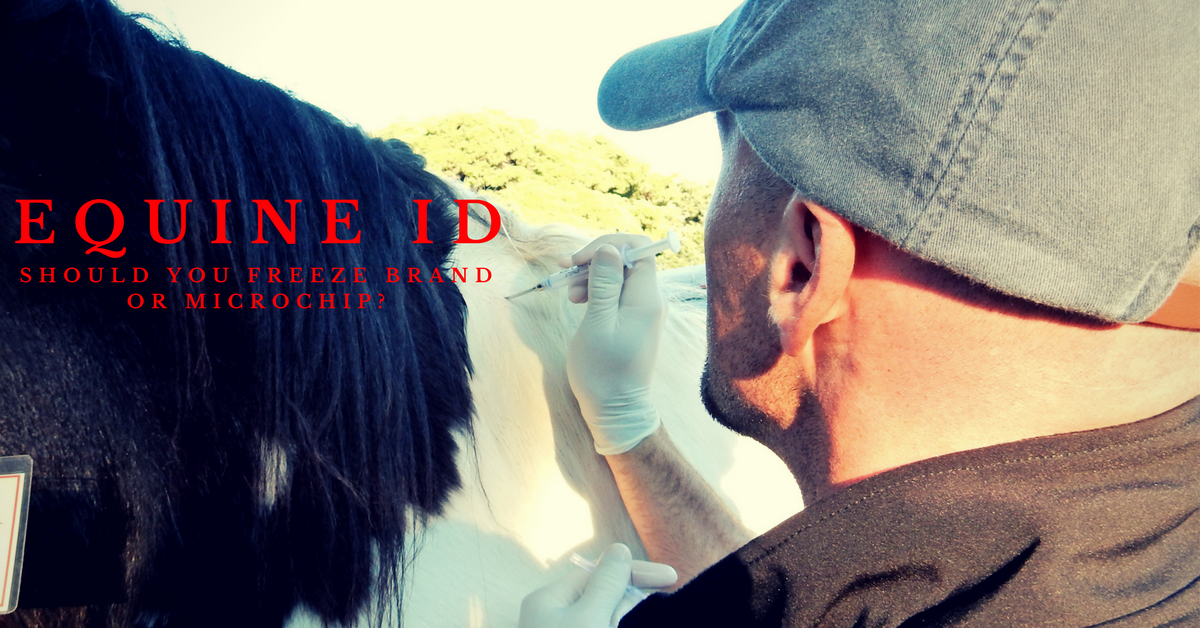
Commentary by Debi Metcalfe, Founder of Stolen Horse International, Inc.™
I have been working with all forms of equine identification for almost 20 years with victims giving me perhaps one of the most useful perspectives on different types of equine identification. What works and what doesn’t?
I believe in telling the public the truth about equine ID methods instead of the pitch that comes with an ID method sales agents or companies selling the products, including microchips which are the subject of this article.
“Should I freeze brand or microchip?” is the question that I get asked the most. There is no one right answer without the correct education.
I read many discussion on Facebook about these two types of equine Id and I will be using questions from one of these threads to help you decide which type of ID is best for you and your horse.
Let’s discuss microchips first. The microchip number is unique and unalterable. Registered in a national database, the chip identifies the horse…and connects it with the owner, leaving very little doubt about ownership. A microchip provides the fastest means for instant owner contact in the event of disaster. Some registries require microchip identification.
Question: How often are microchips actually checked for at auctions vs brands?
Answer: Rarely would be the answer. Even though Stolen Horse International was the first to sell microchips in kits online to the public, I have never misled the public into thinking that a horse will be scanned at horse auctions and slaughterhouses. It is also highly unlikely that a kill buyer at a horse auction is going to have a scanner at a sale and even more unlikely that they would use one to return a horse to an owner. However, a horse can be checked at horse auctions to identify a stolen horse with an active criminal case to prove ownership.
You microchip is because it is the cheapest and quickest permanent ID. In most states, you can even insert your microchip into your own horse. Once done you have your registered serial or VIN number for your horse and it travels with the horse everywhere. Forget who is scanning or not scanning, know that you can find a scanner if needed and hope to God you never need it. If you do need it be thankful that you had the forethought to prepare in case the worst ever happened.
Statement: I’ve never seen once seen a microchip at the horse auction I attend.
Reply: You do not see them but I promise you that some do have access to them even if they don’t have one of their own. Think about the horse auctions that have vets pull the Coggins at the sale. I personally know several of those vets have scanners. The auction owners do not want them used so they do not pull them out. Several of them have purchased their scanners from Stolen Horse International for their practices. So again, there may be scanners at auctions without you knowing it.
When I asked two of the vets that purchased their scanners from us why they do not scan the horses when they do the Coggins the answer was understandable: they wanted to keep making money.
True or False: Not many people microchip their horses.
False: Our small little nonprofit has sold thousands of microchips and this is not our business. It is a fundraiser that helps support what we do for victims and horse owns. There are companies that target the equine market and they would not be doing so if they were not making what? Money! Even though it is not as popular as microchipping pets it has been gaining ground on them for years and I predict will be just as popular one day. Think about it. If all the horses were had privately owned microchips there’d be no need for any other type of equine ID.
True or False: It doesn’t matter what microchip I put into my horse. All scanners read all chips.
A HUGE FALSE: There is much to know about the microchips but I have the points I think are most important simplified below.
- There are two main frequencies in the United States
- The US Standard 125 KHz frequency microchip is the oldie but goldie and is still the most widely read by universal scanners in the United States. Both the old universal and new universal scanners read this microchip which is usually a 9 or 10-character microchip number. Unless you are required to have it by your breed registry or you travel outside the USA with your horse, this is still the safest microchip to use in our opinion. I just microchipped another dog and I used this frequency. We have both frequencies in our store and I will not use the other one yet.
- The International 134 KHz frequency is the new kid on the block and is a 15-character number, stands a high chance of not being read when one of the many old universal scanners still in use is used to scan this microchip. The microchip companies by and large tell people everyone is using this chip but our field experience working in microchip clinics and talking to vets across the country says otherwise.
- Many older scanners have not been upgraded by professionals in the field. Many professionals still prefer the older microchip because it is more dependable. Some do not want to spend more money to upgrade. “If it isn’t broke, don’t fix it.” It is sad to say that most vets have no clue, even if they are using the new frequency, that there is a problem reading it. They are simply not given that information by sales agents and I have never seen a warning on a microchip company’s website that states this information.
True or False: A microchip moves after it is inserted into a horse.
Answer: False as along as the microchip is inserted properly. The microchip goes half way between the withers and the poll on the LEFT side of the neck into the nuchal ligament. It is inserted directly into the ligament and not under the skin like a small animal. If it is inserted like a pet then yes, it can move just like it does in the small animals.
True or False: Anyone can take out a microchip.
Answer: False. The smallest pocket scanners scan a diameter of 3-4 inches. Even though you know a horse has a microchip you would need an x-ray machine to find the actual chip.
Statement: Scanning for a chip wouldn't really do anything except tell them if the animal is microchipped. Say you have 100 horses there, 60 have chips, that would be insanely time consuming to scan each chip and then try to contact every chip company to contact each person on those chips to see if their horse was stolen or not.
Answer: First, I’d like to see 60 out of 100 horses at an auction microchipped! If that were the case the auction would learn quickly how to ID the microchip numbers based on repetitive action. Each company’s microchip is identified by the first three numbers. We can identify the top companies when we see their numbers very easily. If that Is not good enough there are AAHA has a microchip lookup tool on their website. Even though it is for small animals there is no distinction with the companies as to what is a pet chip or horse chip. AAHA is not a registry, just a look up tool, and they’d not know what kind of animal the chip has been placed.
There is much more to discuss about microchips but in the interest of time and the length of this commentary, let’s move on to freeze branding.
FREEZE BRANDS
A Freeze Brand can be applied by anyone - owner, vet, farrier, friend, brander, etc. - and you only need clippers, alcohol, liquid nitrogen and a brass branding iron
It is important to note that all of my horses are freeze branded and that we put them on ourselves in 1999.
The freeze brand is a great way to ID a horse but we have found it is one of the hardest types of ID to trace back to an owner. Why? It is because of my work with Stolen Horse International that we have discovered the following:
- There are brand registries in almost every state.
- Texas has brand registries in every county.
- Many people have brands put on at events with very little planning therefore they have not been approved by their state. This makes it possible for more than one person to have the same brand in the same state.
- People in different states can have the same brand.
- Some states like Indiana have laws that state whoever has a brand on a horse and registered in their state that is legal owner of the horse.
- There are thousands of horses freeze brand and not registered. When a brand is not registered in a third-party registry then there is little chance of proving legally that the horse is in fact their horse.
Don't forget to check with your state's brand inspector's office when selecting a brand to make sure your brand is compliant with current brand laws and not a duplicate of another's brand. Be sure to record your brand in your state's brand inspection office. Unrecorded brands offer a small amount of protection and add uncertainty, and in some states, it is illegal to mark a horse without registering with the state.
Statement: A freeze brand is a better ID than any other because you can see it.
Reply: False. A freeze brand is a great visible ID and in some states a great deterrent against theft.
True or False: Horses go through horse auctions with brands and tattoos and traders still buy them and send to slaughter. Microchips aren't going to change anything.
Both true and false: Yes, no type of ID is going to stop the horses from changing through hands of people who only see them as merchandise. However, if a horse is found then ID will prove ownership very quickly once law enforcement is called.
Our organization has a team of volunteers that work very hard to find horses at auctions and feed lots. They have recently located three horses. Two were recovered and the last one is still out there.
Just last week we tried to recover a horse that has been missing since June. Based on background tracing we feel 90% sure we had the right horse but there was no way to prove the black horse was really the horse the owner had stolen. Why? No ID. It was just a black cutting horse with no markings, no scars. How does one prove ownership?
It has been terrible to watch this one slip through our hands when we know that if the owner had taken a few moments to microchip their horse that it would be home by now. We see this happen more than you know.
We had two other cases where the victims swear the horses that have been located are their horses. They look like thousands of other horses and there is no ID on the horses. A microchip or other type of ID can also tell us if we have the wrong horse
With over 5000 cases on www.netposse.com in our Reports section, it breaks our hearts when we find a horse and ownership cannot be proven. It almost happened to my family too with our own stolen horse Idaho. If it not been for a stroke of luck our horse would not have come home either.
Harold and I learned our lessons the hard way. I hope I can help you guys not make the mistake we made by assuming that “it”, whatever it is, always happens to the other person. I can tell you that is not true. All of our horses have multiple types of ID. If one fails, we are sure another one or combination of ID types will help us prove ownership.
Stolen Horse International provides news and other resources for free on this website. As a charitable organization we survive on the kindness of people like you. Please consider donating to help fund the organization or purchasing a NetPosse ID for your horse, dog or cat to help protect your beloved animals!
Debi Metcalfe

Debi Metcalfe
Founder | debi@netposse.com



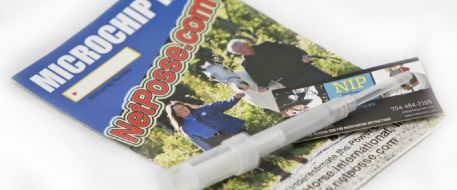



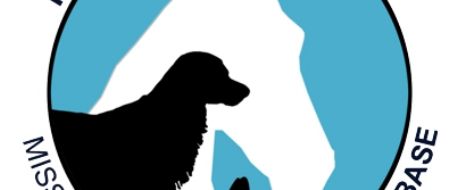

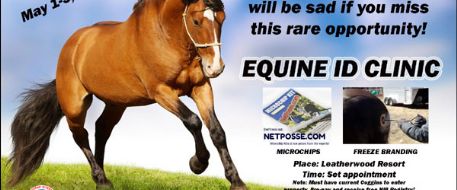





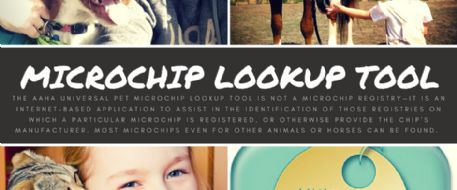




Comments